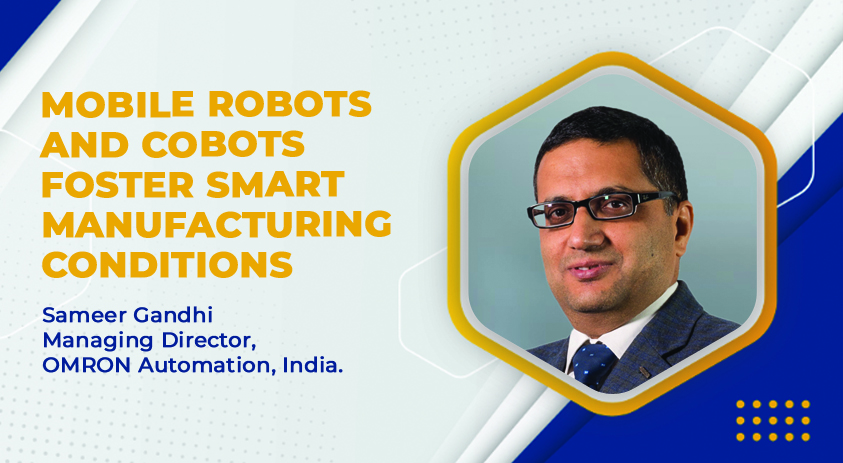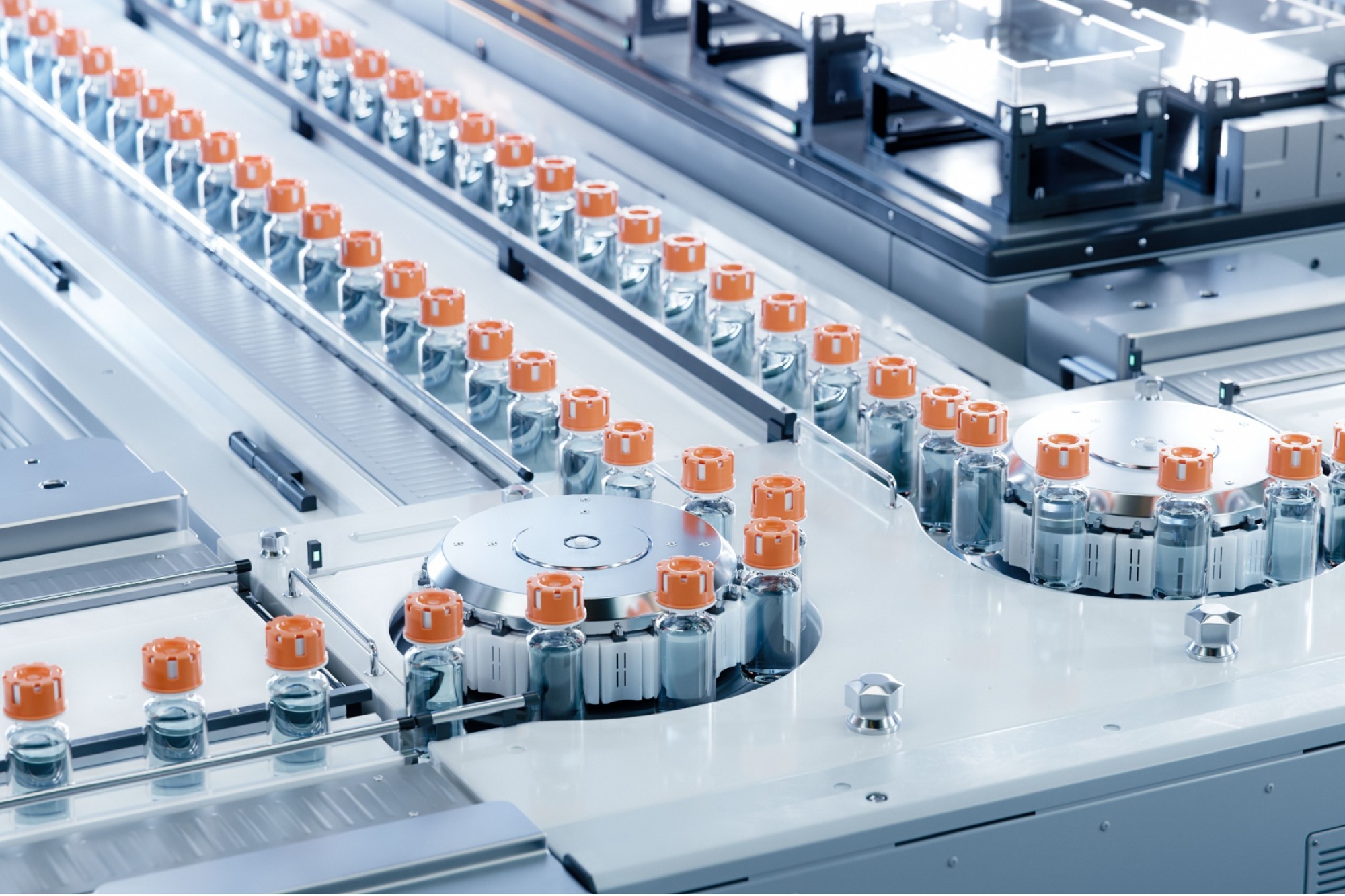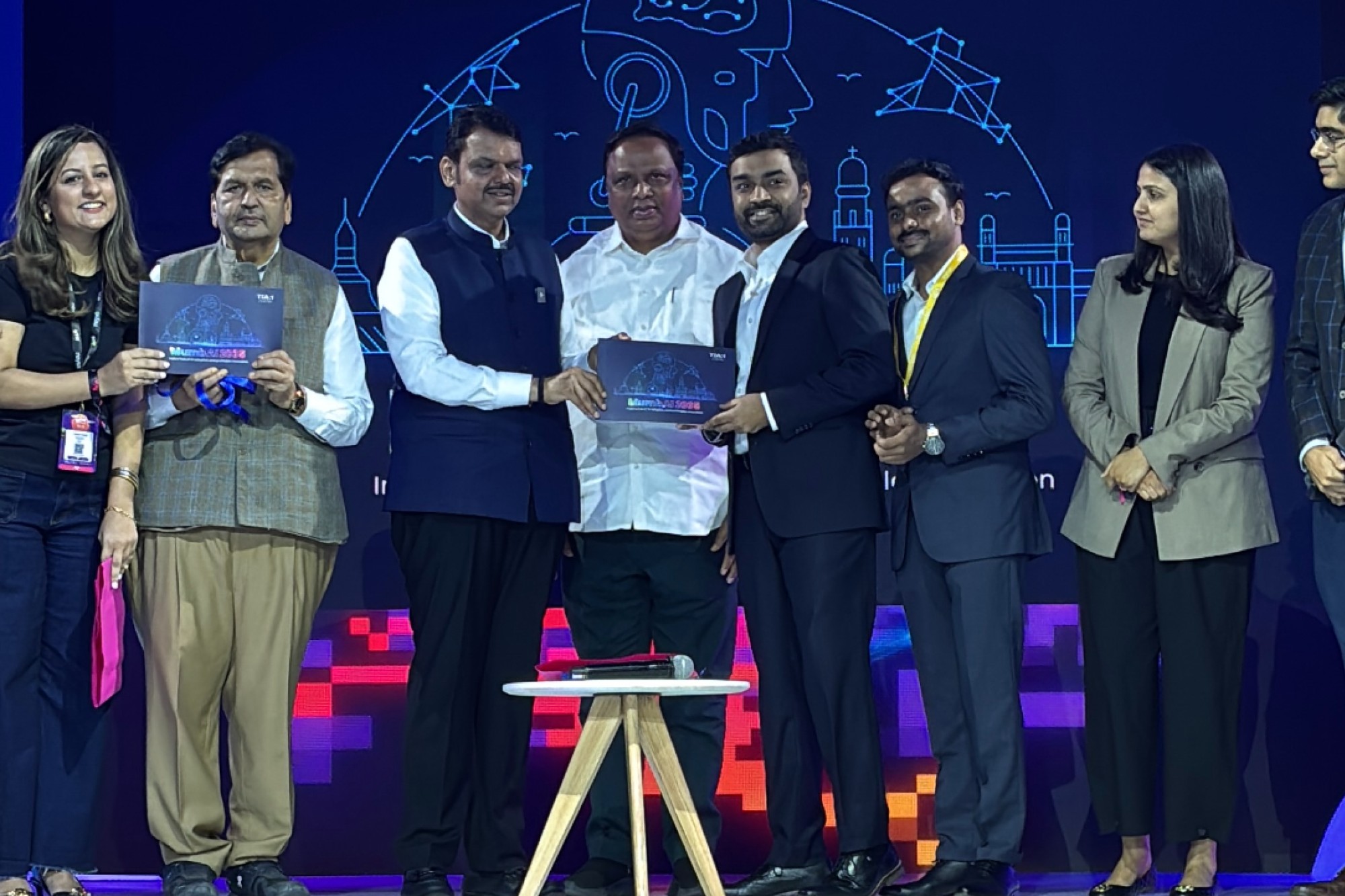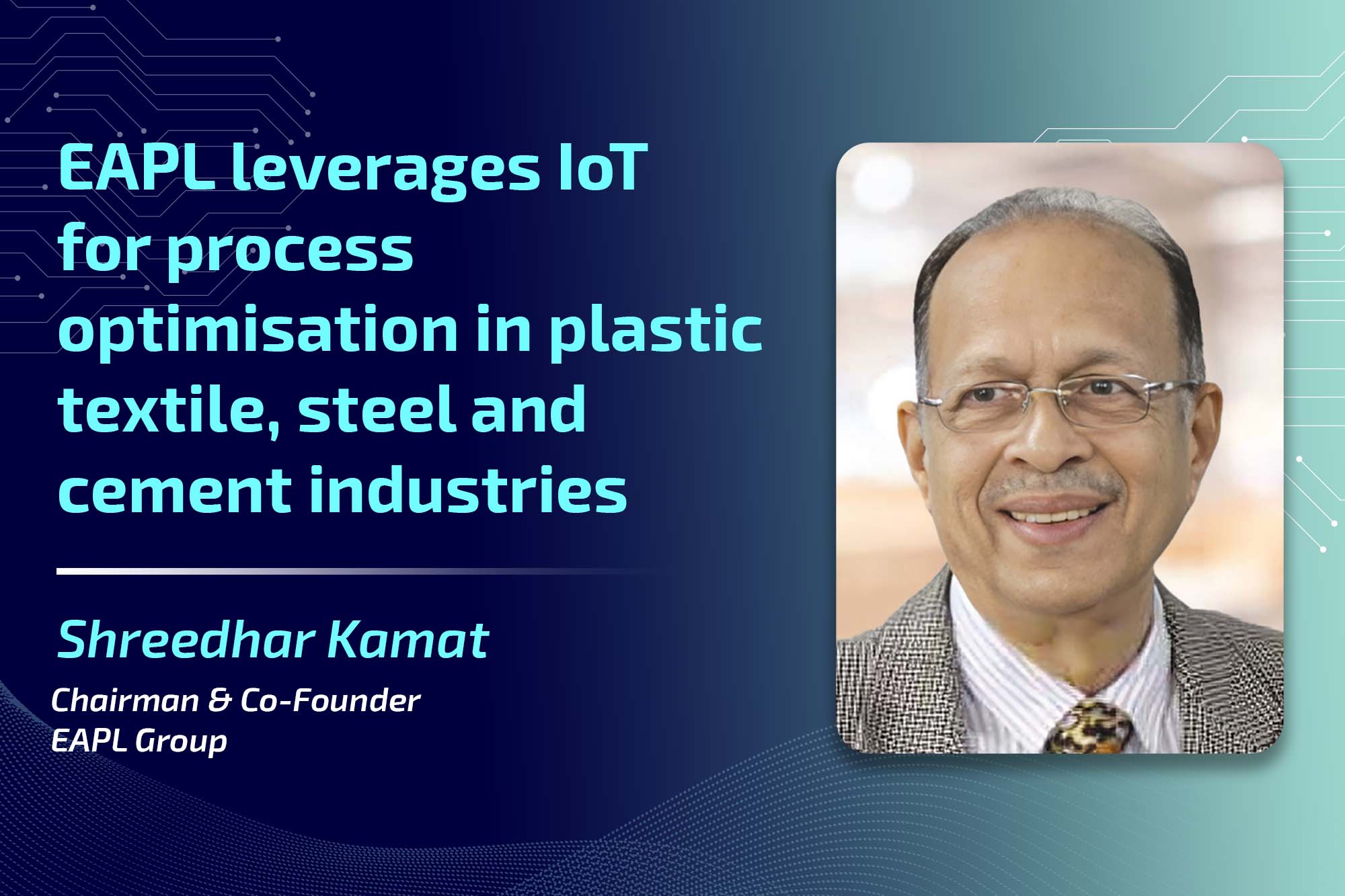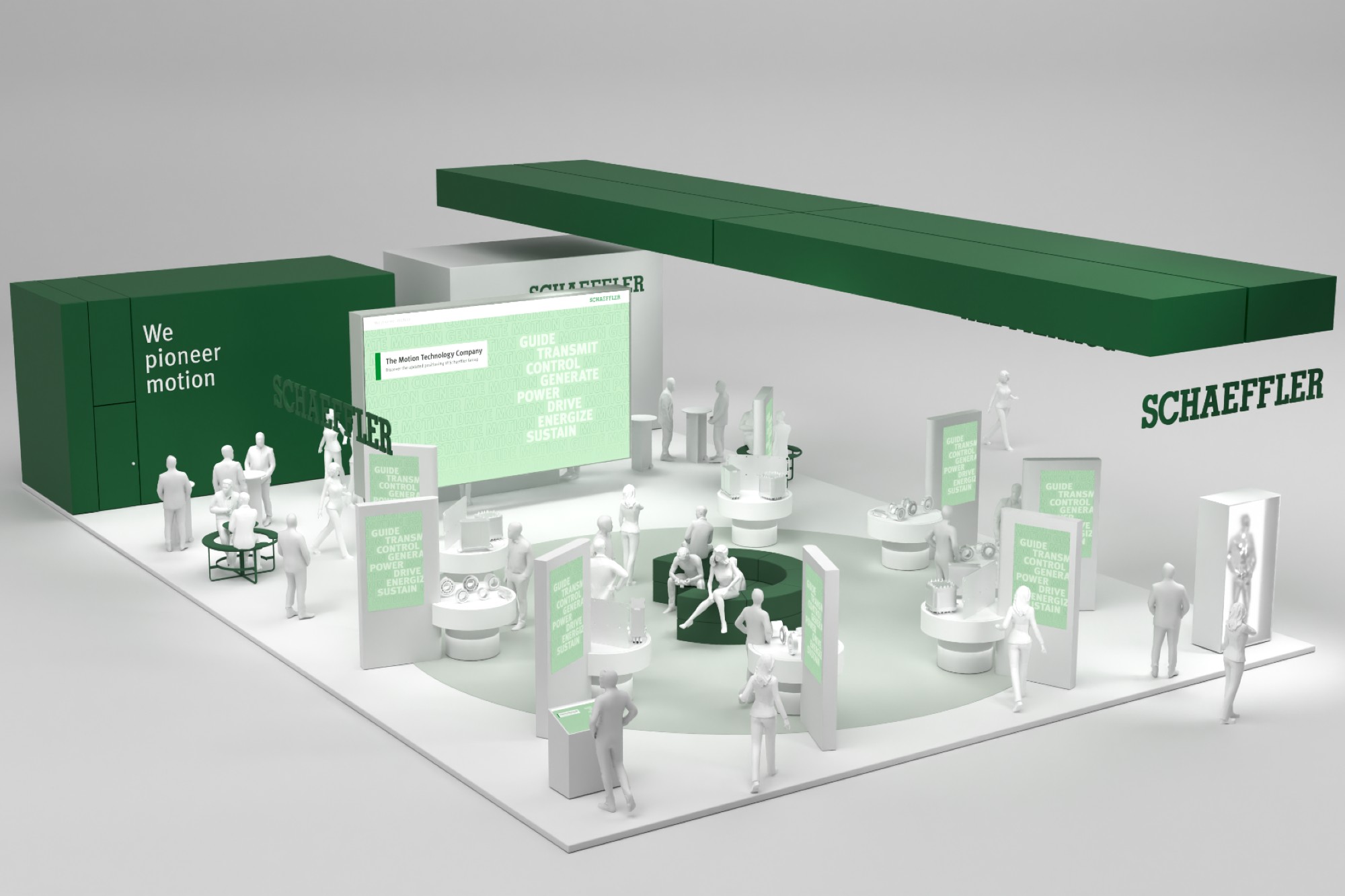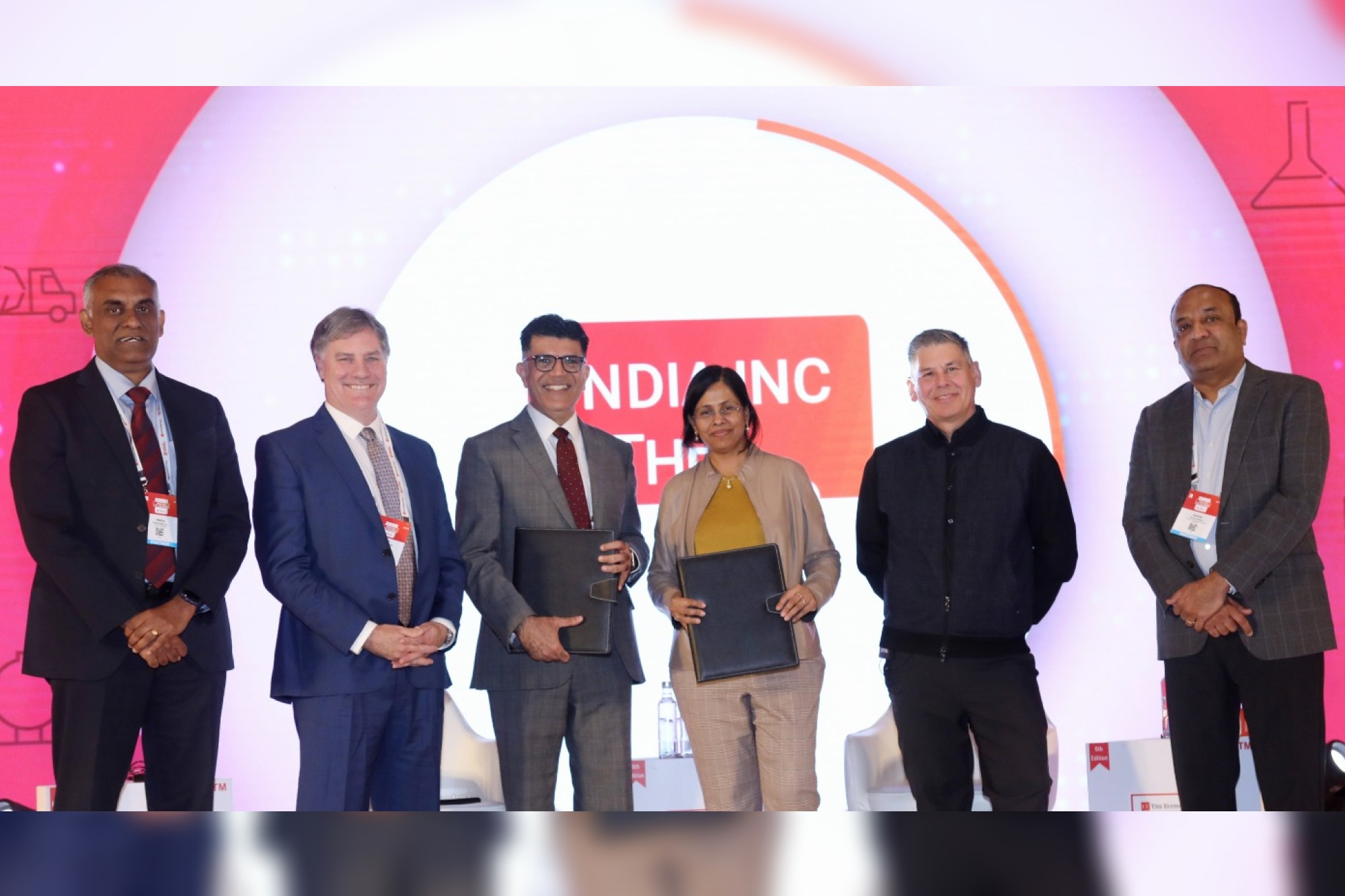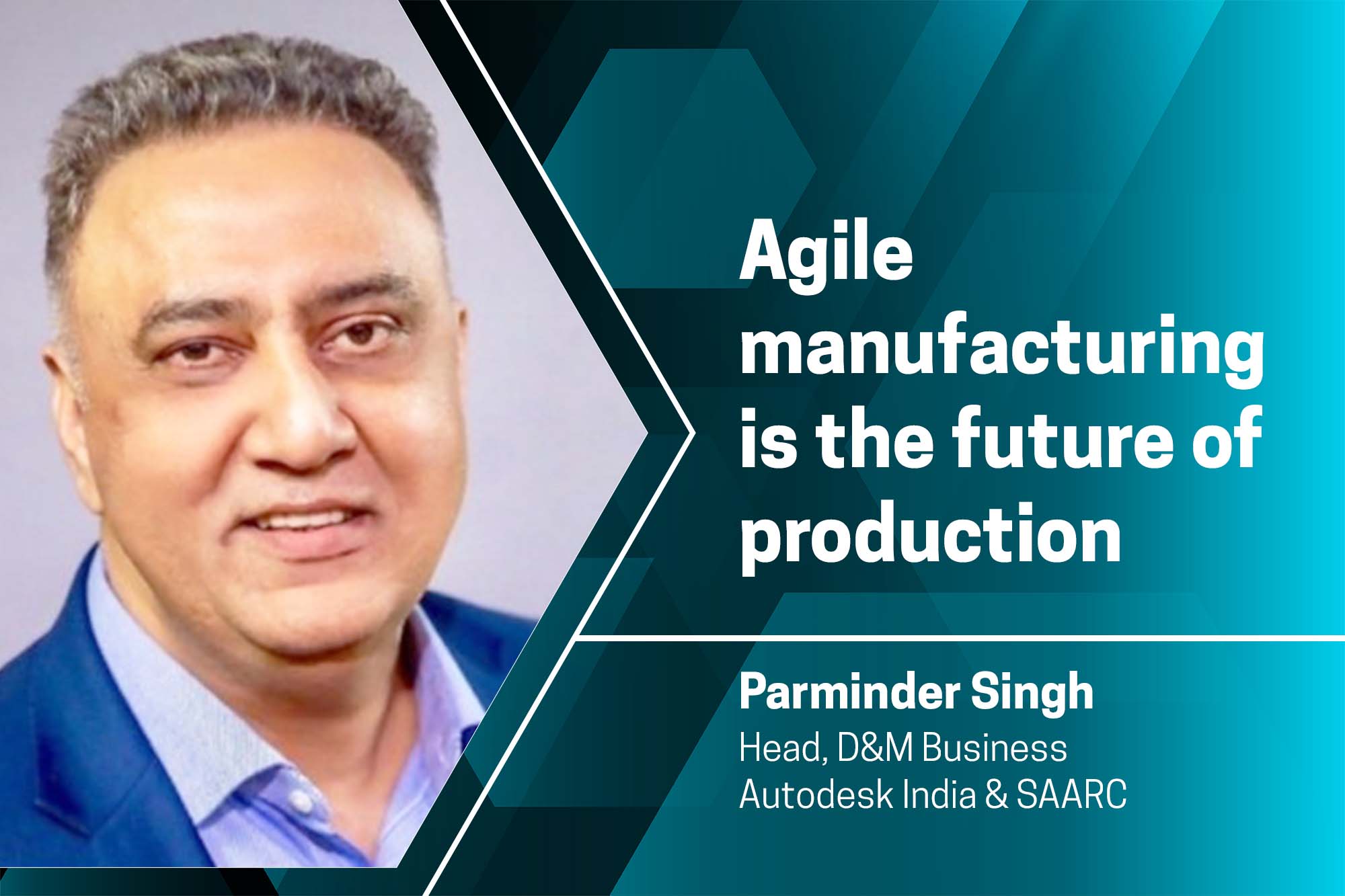Mobile robots and cobots foster smart manufacturing conditions
By OEM Update Editorial July 31, 2023 1:48 pm IST
Sameer Gandhi, Managing Director, OMRON Automation, India, discusses that major manufacturers in industries such as automotive, secondary packaging, FMCG, and consumer electronics have made significant strides in adopting robots and cobots.
In what ways do Industry 4.0 and AI integration in manufacturing contribute to sustainability?
Industrial automation technologies play a crucial role in promoting sustainability and reducing the environmental impact of companies. By implementing appropriate automation applications, businesses can optimise their production processes, minimise waste and emissions, and enhance energy efficiency. Omron’s iBelt technology facilitates the digital transformation of plants, offering valuable data-driven insights into operations. This includes identifying bottlenecks, streamlining workflows, and improving overall efficiency. By eliminating inefficiencies and optimising resource utilisation, technology enables organisations to reduce waste and better use their resources.
Moreover, iBelt technology emphasises energy efficiency by monitoring power consumption and providing insights for optimising the configuration of plant systems. By fine-tuning these parameters, the technology minimises energy waste, leading to lower energy consumption, reduced operational costs, a smaller environmental footprint, proactive maintenance, and compliance with environmental standards.
In addition, automation enables companies to adopt sustainable practices such as utilising renewable energy sources, thereby further reducing their carbon footprint. Automated systems can effectively control and balance renewable energy sources like solar panels and wind turbines. By embracing automation, companies can effectively decrease their environmental impact, contribute to a more sustainable world, and work towards a greener future.
How does the relationship between humans and robotic machines on the shop floor impact manufacturing?
Establishing a harmonious relationship between humans and machines on the shop floor is crucial in the manufacturing sector. OMRON recognises the value of robots by assuming repetitive and hazardous tasks, allowing employees to focus on higher-level responsibilities that demand more complex skills. OMRON’s mobile robots (AMRs) have been successfully employed in various applications, including UV sanitation in hospitals and delivering supplies and conventional material movement within the manufacturing environment. Many functions are being robotised to enhance efficiency:
Pick & Place: Robots excel at tasks such as arranging objects in a matrix or palletising, even when objects are randomly oriented, ensuring precision, speed, and improved productivity and quality.
Goods Movement: Autonomous Mobile Robots (AMRs) and Automated Guided Vehicles (AGVs) are crucial in efficient goods movement within manufacturing facilities.
Quality Inspection & Precision: Robots are particularly valuable for tasks requiring exceptionally high precision, eliminating manual intervention. This includes handling delicate food items like chocolates, cookies, and seafood.
Flexible Manufacturing: The manufacturing process becomes more flexible by utilising AMRs and cobots in material handling. These robots interact closely with humans, fostering collaboration and creating a sense of unity on the shop floor. This transition from fixed conveyors and traditional “hard-tooled cells” to flexible integrated cells improves productivity and efficiency.
OMRON recognises the significance of enabling humans and robots to work together seamlessly, allowing employees to upskill and focus on complex tasks. Robotising various functions, such as pick and place, goods movement, quality inspection, and flexible manufacturing, contributes to increased productivity, precision, and efficiency in manufacturing operations.What major transformations are taking place in the robotic industry for industrial automation?
A significant transformation in the robotics industry is shifting from ‘hard-tooled robotic cell’ to ‘flexible integrated cell’ and from ‘Hard-Coded conventional AGV with limited Flexibility’ to ‘Flexible AIV Autonomous Navigation’ primarily led by digitisation. Vision-guided robots, autonomous intelligent vehicles, mobile robots, and cobots are gaining acceptance and contributing to the development of intelligent manufacturing environments where humans and machines work together seamlessly. Major automotive, secondary packaging manufacturers, FMCG, and consumer electronics have made significant strides in adopting robots and cobots. They recognise that robots are a crucial component of end-to-end automation solutions. Combined with other automation technologies, they can achieve global quality, consistency, reliability, and hygiene standards.
OMRON stands out globally for its robust and diverse robotics portfolio, seamlessly integrated with vision systems. OMRON offers a range of robotic solutions, including cobots, Scara robots, articulated robots, and parallel robots, which, when combined with vision systems, enable synchronised movement, facilitate part manipulation, and assemble intricate designs with speed and precision. These solutions provide numerous benefits, such as increased uptime and throughput, enhanced safety levels, and optimised space and energy consumption. OMRON’s Mobile Robots (AMRs) also significantly contribute significantly by promoting collaboration between humans and machines to boost productivity across diverse operations.
What are your future priorities in meeting automation needs?
Expanding our presence in India remains a key priority for OMRON, as the country holds immense importance for our automation business. With its growing market and the China+1 opportunity, India has become even more significant in our business strategy. Furthermore, considering OMRON’s long-term vision, known as Shaping the Future (SF 2030), which focuses on addressing social issues through automation, we are committed to improving the lives of people in India, given its substantial population.
We are actively strengthening our connections through physical and digital interfaces to enhance our customer engagement. This involves conducting webinars and seminars, participating in exhibitions, and investing in facilities that enable customers to experience our technologies and collaborate on innovative solutions with OMRON’s support. We are also investing in expanding our capabilities, both in terms of skilled personnel and their skill sets, to serve the needs of our customers better.
Please talk about human-centred robotics and its impact on reshaping industries.
Collaborative robotics, referred to as human-centred robotics, involves developing and implementing robots that can work alongside humans in shared workspaces. This technology brings significant advancements to the manufacturing industry, particularly in productivity, safety, and efficiency. As this field progresses, we can expect to witness further advantages and expanded applications.
One notable advantage of human-centred robotics is its ability to enhance task completion speed and accuracy. These robots perform repetitive tasks without fatigue or errors, improving overall quality and consistency in manufacturing processes. Moreover, they can assist human workers in undertaking hazardous or physically demanding tasks, reducing the risk of injuries.
Another benefit of using human-centred robotics in manufacturing lies in the increased efficiency and cost reduction that human-centred robotics brings to manufacturing operations. Robots can operate continuously, enabling uninterrupted production without breaks or shift changes. They also offer flexibility by being easily reprogrammable to perform various tasks or adapt to evolving production requirements. This adaptability enhances operational efficiency and helps control costs.
Cookie Consent
We use cookies to personalize your experience. By continuing to visit this website you agree to our Terms & Conditions, Privacy Policy and Cookie Policy.



